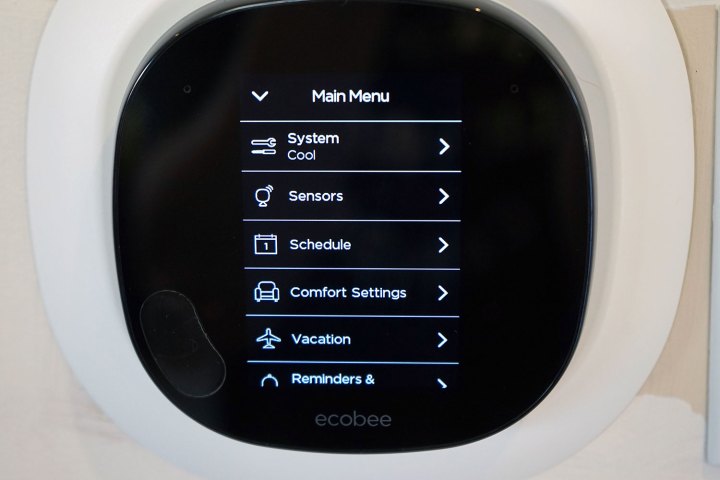You’re about to take the plunge on a smart thermostat, but you want to make sure your home is ready for it. Typically this involves finding a c-wire to keep the smart thermostat powered constantly, but there are other factors to line up. Let’s dig into what you need to know.
How do I know if my smart thermostat is compatible?

Smart thermostats have a lot going on inside, and figuring out compatibility can be a bit of work. A recurring theme among every smart thermostat is the need for a common wire, or c-wire. This wire provides an ongoing power supply to your smart thermostat so it can run in the background constantly. The always-on nature of smart thermostats is what allows them to learn when people are home and when to automatically make temperature adjustments.
- Turn off the breaker for your air conditioner and furnace just to be on the safe side.
- Remove your existing thermostat’s faceplate and check to see if there is a cable attached to the thermostat’s c terminal.
- If not, unscrew the thermostat and pull it gently away from the wall. An unused c-wire may be coiled. If so, you’ll need to attach the other end of this cable to the furnace’s c terminal before connecting your smart thermostat.
- If there is no c-wire there either, you can use the g-wire instead. The only downside here is that it means you won’t be able to independently turn your HVAC system’s fan off and on. It will only activate with heating and cooling. Be sure to take pictures of the wire setups before changing anything, just in case you need to revert.
- To make the substitution, you’ll need to change the wire’s position from g to c at the furnace as well as at the thermostat.
- If all else fails, smart thermostats typically include a kit that lets you plug your smart thermostat into a standard AC outlet for its power supply.
Of course, if trying your hand at DIY electrical is too daunting, it’s always possible to hire contractors to assess the compatibility of your home, and handle the full installation.
What smart thermostat is compatible with my home?
So how do you find your c-wire?
All major brands of smart thermostats are versatile enough to connect to most types of home heating and cooling. Products from Nest and Ecobee should work. Also, Honeywell should work with your home. All of them should work even without a c-wire thanks to AC adapters. Your heating and cooling source shouldn’t matter either. Gas, oil, and electric heating are all supported. Supplementary systems like humidifiers and dehumidifiers can often be integrated with smart thermostats, too.
There are some exceptions to be made that are generally held across brands. Wires that use multiple large strands tend to be incompatible. High voltage wires labeled at 120V or 240V are also incompatible with many smart thermostats. That shouldn’t be too big of a concern, however, since most homes use low voltage for their thermostats.
Do smart thermostats work with all homes?
Strictly speaking, smart thermostats don’t work with all homes, but they do work with the vast majority. You typically need a central HVAC system in order to be able to install a smart thermostat.
Smart thermostats also require Wi-Fi and a smartphone for full control. A healthy amount of the convenience of a smart thermostat is being able to control it remotely, which you can’t do without an internet connection. It may be worth moving your Wi-Fi router or getting a network extender to ensure your smart thermostat has a sufficiently strong connection to your home network.
How do I choose a compatible thermostat?
First off, you can skim through the list of our favorite smart thermostats and find one that meets your needs. Odds are it is compatible. To double-check, individual brands have compatibility tools to ensure their smart thermostat will work with your home. These typically involve taking stock of the wires plugged into your current thermostat (see above for how to find those). So, once you’ve removed the cover on your current thermostat, then make note of the letters associated with the cables currently plugged in. Then visit the relevant compatibility page to ensure you’re good to go.
- Nest thermostat compatibility tool
- Ecobee thermostat compatibility tool
- Honeywell thermostat compatibility tool
Hopefully, this insight puts your mind at ease when it comes to picking up a smart thermostat. Smart thermostats have the potential to reduce your monthly bills by intelligently turning off climate control when unneeded, and using predictive engines to make your home comfortable when everyone’s home. For all of the work it takes to check on compatibility and install, we think you’ll find a smart thermostat is worth it.



